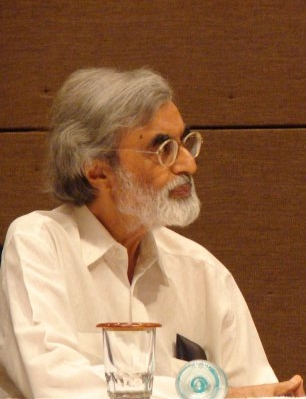Update:
I wrote this in 2016. A good six years later, designers are still conspicously missing from the list. Prof MP Ranjan has talked about this even before me. (Jump to 11:35 on the video) Why is a Bollywood singer or a cricketer is more deserving of the award than designers?
Today’s list of Padma awards are out and there is no designer, still, in the list. I blogged about this, last year as well. The government finds it fit to recognise Ajay Devgn’s work as worthy of an award but not any of the design stalwarts, who used design to bring about long-lasting changes in society and the profession. To provoke a discussion on the subject, I present here, my list of Padma awards, deserving for design. This is of course, only the beginning. There may many more that I may have missed.
H Kumar Vyas, Design Educator, Ahmedabad  H Kumar Vyas deserves a Padma award for pioneering Design education in this country and giving a distinct Indian touch to the curriculum that was launched at NID, when the design programmes began. He continues to influence and contribute to design education, through his books and research.
H Kumar Vyas deserves a Padma award for pioneering Design education in this country and giving a distinct Indian touch to the curriculum that was launched at NID, when the design programmes began. He continues to influence and contribute to design education, through his books and research.
M P Ranjan : Design thinker, Ahmedabad
 Ranjan’s contribution to spearheading the cause of design is well-known. He deserved this even, when he was alive, as he had the audacity to project Design thinking as a tool for solving all the country’s problems. A believer of the power of Design, he truly deserved to be recognised for his contribution.
Ranjan’s contribution to spearheading the cause of design is well-known. He deserved this even, when he was alive, as he had the audacity to project Design thinking as a tool for solving all the country’s problems. A believer of the power of Design, he truly deserved to be recognised for his contribution.
Poonam Bir Kasturi, Daily Dump, Bangalore:
 Poonam deserves to be in this list, for making Swachch Bharat, her mission, even before the PM did. And chose to use Design thinking to develop an entire eco-system for waste management. She is a firm believer in the power of design to effect change.
Poonam deserves to be in this list, for making Swachch Bharat, her mission, even before the PM did. And chose to use Design thinking to develop an entire eco-system for waste management. She is a firm believer in the power of design to effect change.
David Abraham & Rakesh Thakore: Fashion Designers
Long before NIFT was even conceived and even before fashion design became a household name, David & Rakesh, early graduates of NID, set up their studio to do path-breaking work in bringing Design to the people. They set up Abraham & Thakore and the label grew up to become the epitome of international fashion with Indian sensibilities.
Surya Vanka: UX Leader, Microsoft, Seattle
Academically brilliant and suave, Surya deserves to be in this list for the fact that he rose in the ranks of Microsoft, to become the head of User experience, in Seattle. UX may now seem like fashionable term, but Surya had pioneered in this much before anyone else, from India.
Geetha Narayanan: Srishti School of Art, Design & Technology, Bangalore
Geetha’s vision to create an alternative school of thought in design education is legendary. She broke out of the NID mould of design education, yet retaining the essence of a fresh and bold new pedagogy. She has been singularly responsible for bringing a fresh load of talent to the design pool.
Kiran Bir Sethi: Design for Change, Ahmedabad, India.
Kiran’s Design for Change is a much-written about process of empowering school children to solve their own problems. That this idea, panned out to different schools all over the world is also well-known. That she believes in the power of Design and leveraged it with school-children, make her a candidate for the award, too.
Jaya Jaitly, Dastkari Haat Samiti, New Delhi:
Jaya Jaitly should be credited with believing in the power of design to restore and rejuvenate Indian handicrafts. Whether it is introducing typography to artisans, or teaching them colour schemes and encouraging artisans to use design to further their crafts, Jaya managed to leverage design for Craft design.
There are obviously, many more who deserve the awards. It’s high time the government woke up to recognising designer’s contribution. Next January, perhaps?










